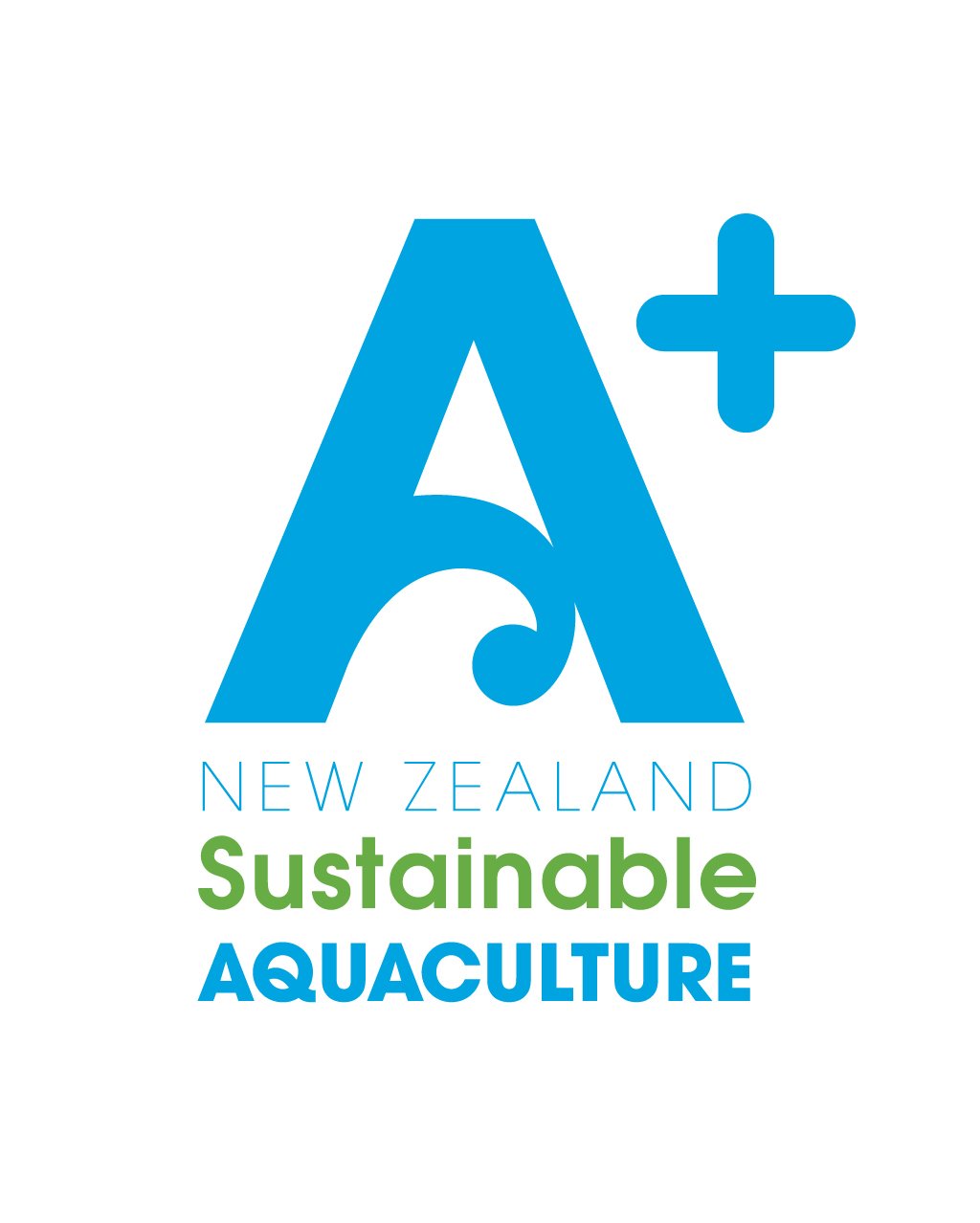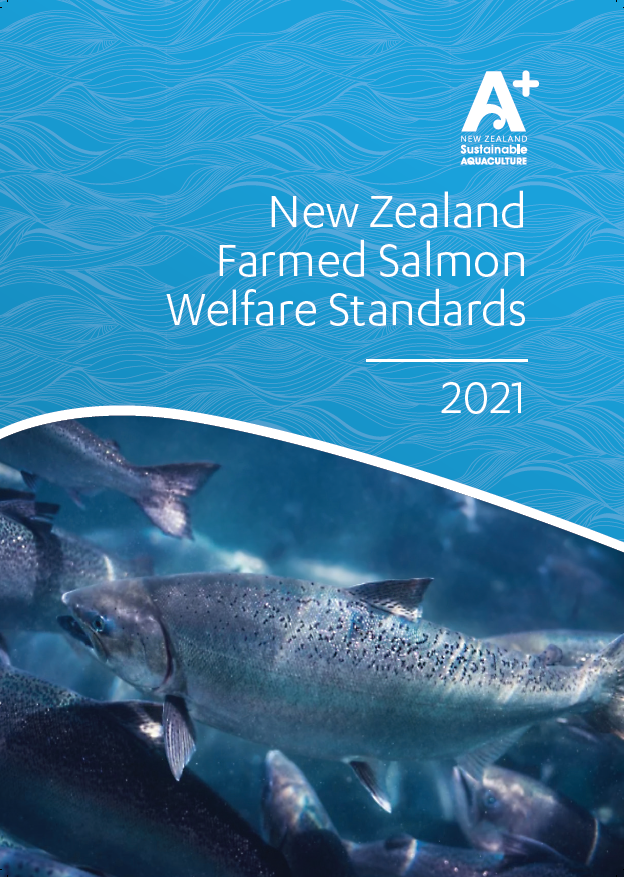
Our Species are World Leading
We are very proud to say that here in Aotearoa we farm some of the most sustainable and ethically farmed seafood in the world, and it’s not just us saying that! Just ask the experts!

Click to learn more about our environmental credentials
Low Carbon Footprint
Wildlife and Aquaculture
Mussels
Oysters
Salmon

Low-Carbon Seafood
Life Cycle Assessments were completed for each of our farmed species by the independent research group Thinkstep.
Life Cycle Assessments (LCAs) investigate the life cycle of a product from the start of the process to when it reaches the consumer - You calculate the amount of carbon produced at each production stage, providing a clear calculation of the associated emissions.
Our farmed species support a carbon conscious diet
Our Greenshell mussels were calculated to be one of the lowest carbon sources of protein in the world - lower than tofu!
Our Pacific oysters have a carbon footprint lower than eggs and poultry making them one of the lowest carbon animal proteins available.
Our King salmon have a similar carbon footprint to our oysters making them another excellent carbon conscious diet option.

Wildlife Stories
Many animals spend time on and around our farms from around the country every day. They use farm structures for foraging, hunting, and resting. We also have a number of key species who are thriving around our farms.
Kawau Pāteketeke - King Shag
Historically there had been great concern about the interactions between aquaculture and the King Shag (Leucocarbo carunculatus, Gmelin, 1789), a very rare species of cormorant only found in the Marlborough Sounds of Aotearoa. This was often raised as an issue during the consenting process for marine farms.
In response to these concerns, the Marine Farming Association (MFA) teamed up with industry members and Seaford Innovations Limited to fund some research. They embarked on a lengthy banding and tracking project to assess King Shag behaviour and their relationship our farms.
As it turns out, King Shags love mussel farms!
They were able to discover that each individual shag had their favourite places to fish, and many individuals preferred fishing around our farms.
They also saw that all tracked King Shags would rest on mussel farms during the day between fishing trips. This research provided a true case study of some of the ecosystem services provided by aquaculture in New Zealand.
The King Shag still needs your help!
The colonies of King Shags are very easily disturbed by boat traffic as nesting Shags scare easily. The aquaculture industry and MFA have set standards that all marine operators stay a minimum of 200m away from any King Shag colony. However, there are thousands of recreational boaties who enter the Marlborough Sounds each year. You can do your part by staying 200m away from bird colonies and encouraging other marine users to do the same.
Pūteketeke - Crested Grebe
The Pūteketeke rose to fame during Forest & Bird’s contentious 2023 Bird of the Year competition, where the Pūteketeke was crowned ‘Bird of the Century’ thanks to the enthusiastic and extravagant promotional campaign of comedian, John Oliver. However, long before the infamous victory, the salmon farmers in Twizel were already supporting the endangered Pūteketeke who had taken up residence near their farms in the Hydro Canals.
The Pūteketeke happen to be thriving around the salmon farms and have been setting up nests in the calm and sheltered waters near the farm structures. The team at High Country Salmon saw these rare birds trying to build nests nearby and supported them by building a floating wooden platform for them to nest on. The Grebes gladly accepted the assistance and soon they were carrying their chicks on their backs around the site. They remain regular visitors to the farms in Twizel.
The Department of Conservation acknowledges the popularity of the native birdlife at the farm and has installed a board to showcase it to visitors. Crested Grebes, with a population of fewer than 1000 birds and a vulnerable conservation status in New Zealand, face challenges from predators and habitat loss, making their presence at the farm all the more significant.
A National Taonga
The Greenshell Mussel
Kūtai - Perna canaliculus
Our Greenshell mussels are native to New Zealand and are one of the world’s most environmentally friendly sources of protein.
What makes our Greenshell mussels so special?
Scientists and conservationists from around the world have recognised the potential for mussel farming to provide numerous ecosystem services, as well as the key role it plays in the development of regenerative aquaculture.
The NZ Greenshell mussel has an incredible sustainability story and fits perfectly into an environmentally conscious diet.
High Protein - Low Carbon
Greenshell mussels make an excellent nutritious addition to a carbon conscious diet.
Research has revealed that our Greenshell mussels have some of the lowest carbon emissions of all protein sources - lower than tofu.
An assessment by Thinkstep-anz investigated the carbon emissions associated with each production stage against the protein available in the end product.
The Ecosystem Services of Mussel Farms
There is a growing body of scientific literature about the ecological benefits of mussel farms from around the world.
Mussel farming is associated with remarkably few environmental effects. In some cases it is even considered to benefit the surrounding environment.
A literature review report produced by the National Institute of Water & Atmospheric Research (NIWA) investigated literature about the ecological effects of mussel farming, and highlighted some of the key ecosystem services provided by the Greenshell mussel farms in the Marlborough Sounds.
This review found:
Mussel farms create habitat which increases biodiversity in the area
Mussels mitigate the effects of run-off pollutants from land activities
Mussel farms support foraging and hunting activity of seabirds and marine mammals
Another study by The Nature Conservancy (TNC) also found that mussel and oyster farms positively affect species abundance and richness and may have a significant role to play in supporting biodiversity in marine ecosystems.
Another report showed again that mussel farms create habitat and help mitigate against pollution. See the full report here.
The Nature Conservancy. 2021. Global Principles of Restorative Aquaculture. Arlington, VA. Graphic data from Theuerkauf et al., 2021
Another report has been produced on the Global Principles of Restorative Aquaculture which reaches the same conclusions again, and details how mussel farming can play a role in natural ecosystems restoration.
The ecosystem services discussed include the mitigation of pollution, stabilisation of benthic sediments, and habitat provision for invertebrates and juvenile fish.
The Nature Conservancy. 2021. Global Principles of Restorative Aquaculture. Arlington, VA
Uniquely Farmed in Aotearoa
The King Salmon
Hāmana - Chinook Salmon - Oncorhynchus tshawytscha
In Aotearoa we farm a unique salmon species, have a low carbon footprint, maintain high welfare, and have received international endorsements of sustainable farming practices from trusted conservation programmes.
Salmon Life Cycle Assessment
Life Cycle Assessments are an internationally standardised method of assessing the carbon footprint of a product, accounting for all stages of its production cycle.
Thinkstep-anz completed an LCA on our King salmon and concluded that it was amongst the lowest carbon animal protein sources world-wide.
If you are interested in how these carbon emissions were calculated, you can access the full reports and report summaries below
Salmon Facts
Here in Aotearoa, our farming is unique. We farm a different species to most of the world and have some excellent sustainability credentials that endorse our farming practices.
Below you can learn some facts about how we grow our salmon here in New Zealand.

World Leaders in Salmon Welfare
Aotearoa has legislated the requirements for humane treatment and harvest of farmed animals under the Animal Welfare Act 1999. This includes provisions around the farming of aquatic animals. However, there is no specific Code of Welfare for finfish within the Act.
In light of this, our salmon farmers recognised the need for additional welfare standards specific to their unique salmon species.
The NZ Salmon Farmers Association formed a Fish Welfare Working Group and developed the first ever industry-led Salmon Welfare Standards. These Standards are based on established international welfare principles such as the 5 Freedoms, as well as considering additional quality of life factors. The Standards also require all salmon farmers to operate under Fish Welfare Management Plans, ensuring that all salmon farming in Aotearoa is aligned in it’s welfare practices.
Compliance with the Salmon Welfare Standards is monitored through the A+ sustainability programme and are reviewed regularly to ensure international best practice is met, and wherever possible, exceeded.
Monterey Bay Aquarium Seafood Watch
We are the ‘Best Choice’ when purchasing salmon!
For decades Monterey Bay Aquarium has been educating consumers on the sustainability of their seafood through their Seafood Watch programme.
They complete independent assessments of seafood industries from around the world and grade them based on their environmental practices and impacts. The programme then rates seafood products by a traffic light system using the categories of Best Choice, Good Alternative, and Avoid.
Under this programme, NZ farmed King Salmon has long been recognised as the ‘Best Choice’ recommendation for consumers around the globe. This is a testament to our unique industry and the high standards we set with our farming practices.
Best Choice
Monterey Bay says:
“Buy first. They're well managed and caught or farmed responsibly.”
Good Alternative
Monterey Bay says:
“Buy, but be aware there are concerns with how they′re caught, farmed, or managed.”
Avoid
Monterey Bay says:
“Take a pass on these for now. They're overfished, lack strong management, or are caught or farmed in ways that harm other marine life or the environment.”
Simple, Succulent, Sustainable
The Pacific Oyster
Tio - Magallana gigas (Crassostrea gigas)
Our Pacific oysters are grown in some of the worlds most pristine coastal waters. With a small environmental footprint, they are among some of the most sustainable, clean, and beautiful fine dining species in the world.

Suitable for a Carbon-Friendly Diet
The Life Cycle Assessment completed by Thinkstep-anz showed that Oysters have a very low carbon footprint when compared to other sources of protein.
You can read the report for more detail on the carbon footprint of NZ grown oysters.
The Ecosystem Services of Oyster Farms
A study by The Nature Conservancy (TNC) found that mussel and oyster farms positively affect species abundance and richness and may have a significant role to play in supporting biodiversity in marine ecosystems.
Theuerkauf SJ, Barrett LT, Alleway HK, Costa-Pierce BA, St. Gelais A, Jones RC. Habitat value of bivalve shellfish and seaweed aquaculture for fish and invertebrates: Pathways, synthesis and next steps. Rev Aquac. 2021; 14: 54–72. https://doi.org/10.1111/raq.12584
Bivalve and seaweed aquaculture production methods and mechanisms and pathways associated with habitat value - See the full report here.
Oysters and Restorative Aquaculture
Another report has been produced on the Global Principles of Restorative Aquaculture which details how shellfish farming can play a role in restoration of natural ecosystems and the ecosystem services that oyster, mussel, and seaweed aquaculture provides.

“ Aquaculture gear and the organisms cultivated on and within them can provide three-dimensional structured habitat that can benefit fish and invertebrates. “
“ Current research has shown that mussels and oysters, as well as seaweed, generally provide the greatest benefit to water quality. “
“ Farms can provide refugia for juvenile fish and invertebrates, functioning in a similar way to natural nursery grounds (Costa-Pierce and Bridger, 2002; Barrett, Swearer and Dempster, 2019). “
“ The three dimensional structure of aquaculture can also stabilize soft sediment, helping to reduce erosion or the impacts of extreme weather events (e.g. Zhu et al., 2020). “































































